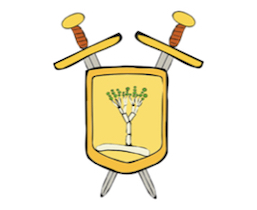Why do fungi produce antibiotics?

We've all been there: there's only one biscuit left on the plate and everyone wants it. Microorganisms also compete for nutrients. This is why many organisms have developed substances that give them an advantage in this competition: Antibiotics. They serve both attack and defence. They help to eliminate the competition and ward off other microorganisms.
Antibiotics act on different targets: For example, they perforate the cell membrane of other microbes or interfere with their protein biosynthesis or DNA multiplication (replication). In order to protect themselves against these attacks, microorganisms develop resistance. These are random genetic changes (mutations) that give them an advantage over their conspecifics. Resistant neighbours that share their special ability to survive can help. Resistance comes in various forms: Some fungi digest foreign antibiotics, others simply actively pump them out of themselves and others change the target of the antibiotic so that it can no longer be attacked. The fungi change the lock, so to speak; the key that actually fits (the antibiotic) thus becomes useless. As such resistances continue to emerge, we must constantly develop new antibiotics for medical use in order to combat infections.
Fungi also use antibiotics to communicate with each other. In small quantities that do not harm other organisms, they can specifically influence their metabolism. For example, they activate genes that ensure the survival of the organism, for example by adapting to the respective nutritional situation. This explains the great structural diversity among antibiotics and their widespread occurrence among microbes.
Alexander Fleming discovered antibiotics produced by fungi by chance in the 1920s. Nothing grew in a bacterial culture around an unintentionally introduced fungus. Fleming came to the conclusion that the mould, identified as Penicillium notatum, must produce something that prevents microorganisms in its environment from growing. The name of the well-known antibiotic is derived from this mould: penicillin. Today, its basic structure (the beta-lactam ring) forms the basis for the development of many synthetic antibiotics.
Read more:
Davies J (2006) Are antibiotics naturally antibiotics? J Ind Microbiol Biotechnol 33:496–499.
© Text and figure Claudia Feurstein / VAAM, c.feurstein{at]tu-berlin.de, Use according to CC 4.0

